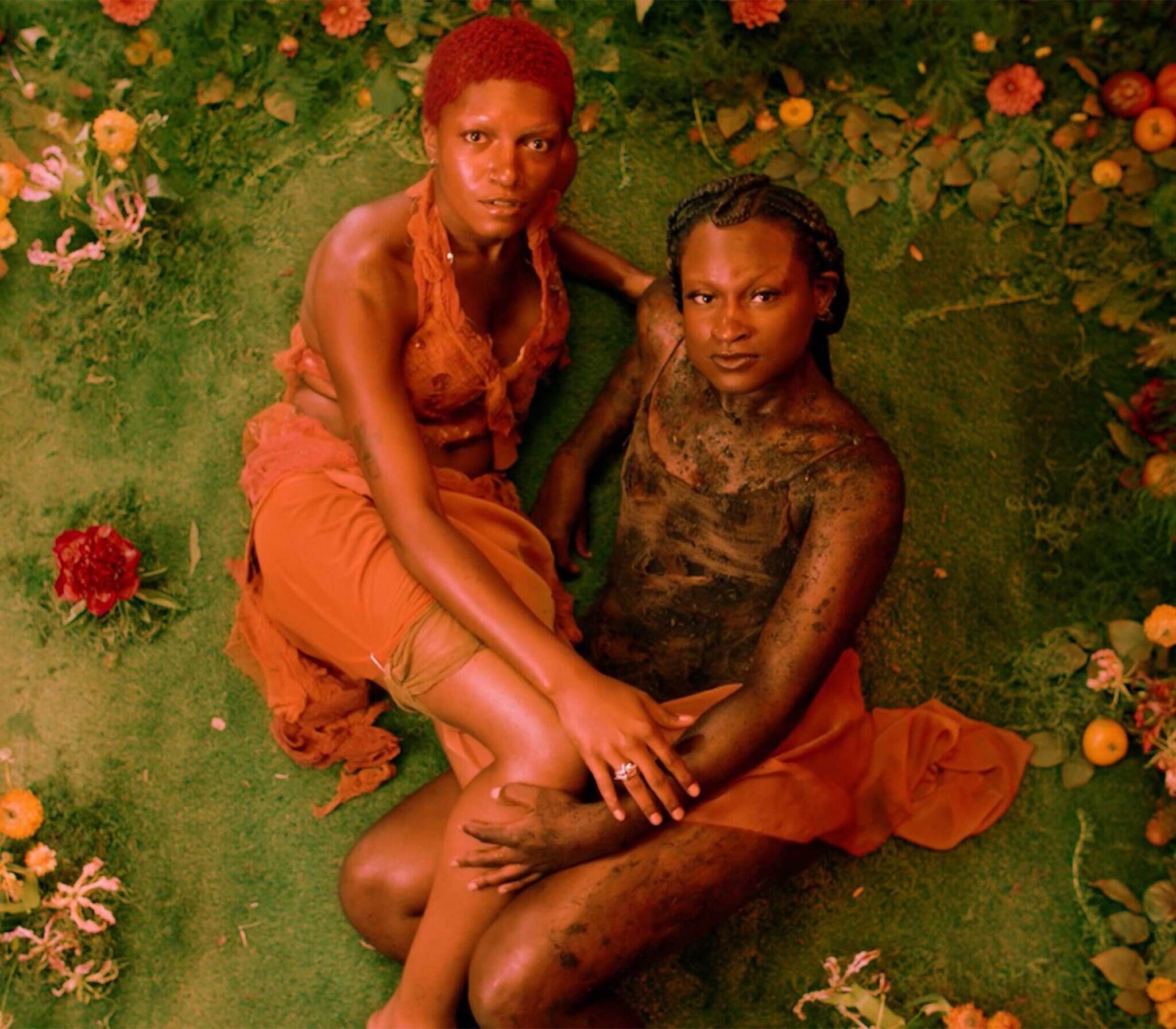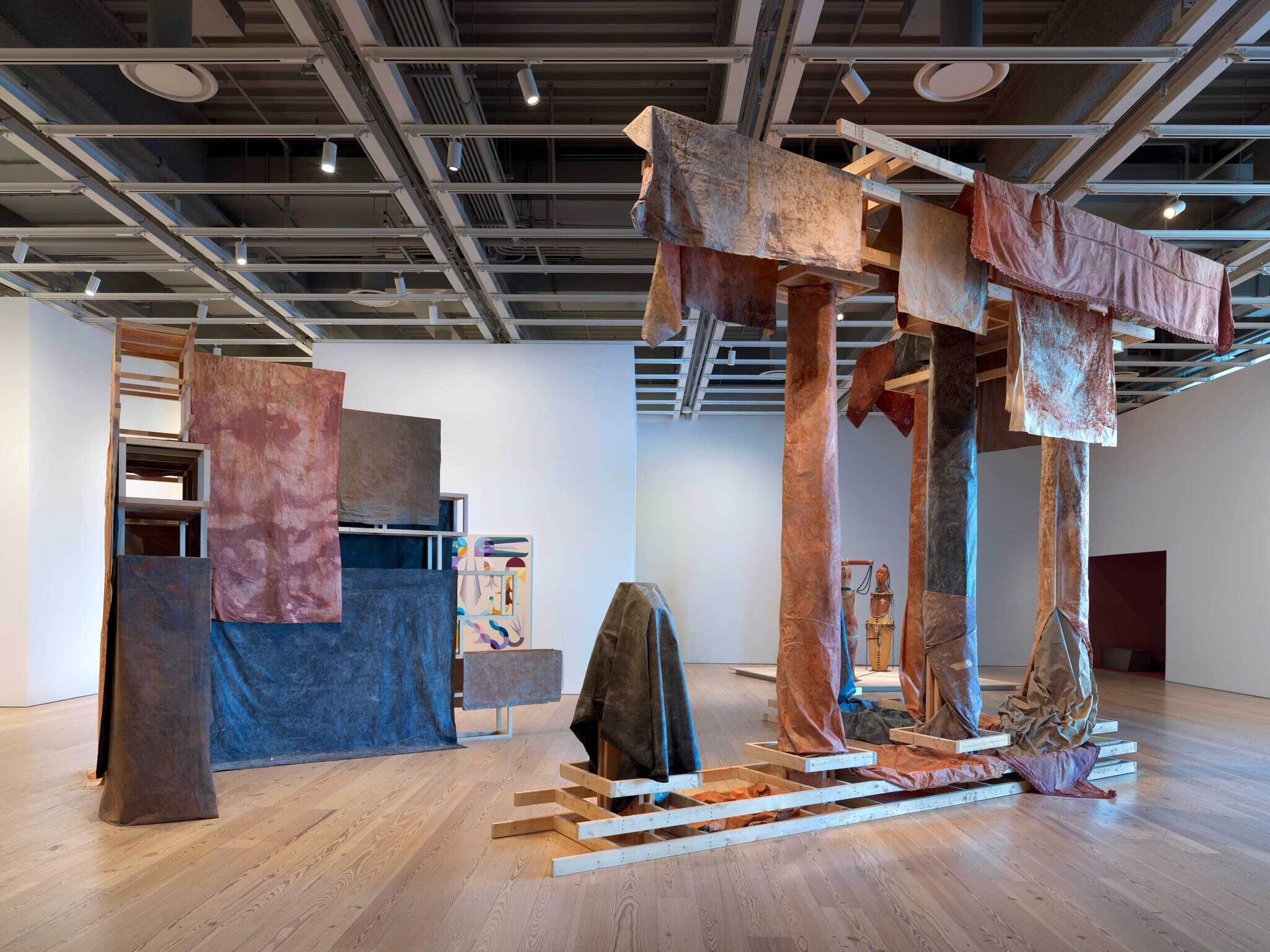Dala Nasser
1990–
Not on view
Audio
-
0:00
Minisode: Dala Nasser on her 2024 Whitney Biennial Artwork
0:00
Narrator:
Welcome to Artists Among Us Minisodes from the Whitney Museum of American Art. For us, this spring and summer are all about the 2024 Whitney Biennial. Over the course of the exhibition, we’ll be sitting down with some of the artists to talk about their art and what it means to be making art in the present unfolding moment.Today we hear from Dala Nasser. Her work in the Biennial is titled Adonis River. The work is a space created from tall wooden structures—columns and cubes—draped with heavy fabric. The fabric is covered in rubbings taken from rocks at the Adonis Cave and Temple and then the material was dyed using iron-rich clay from the banks of the nearby Abraham River on Mount Lebanon, north of Beirut. Although it is now called the Abraham River, it was once called the Adonis River. Here is Dala Nasser.
Dala Nasser:
My name is Dala Nasser. I'm a material and process-based artist. Essentially the story of Adonis and Aphrodite is based on Sumerian history. So in ancient Sumerian tablets, there was a story of the goddess of fertility and her mortal lover and his untimely death and the mourning practices that developed throughout the region commemorating this sort of loss. And it moved on from Sumerian culture to Babylonian to Assyrian and to what you know now as Adonis and Aphrodite. So the names started to change as time moves by. So my interest in the story itself is how it's timeless and how it's morphing slowly and slowly.And for me the interesting thing around this is the location of this tale in a cave in Mount Lebanon. Every spring as the snow melts off the top of Mount Lebanon, it goes through this cave and out into a river. The reason why they called it Adonis's River is that every spring, when the water would come gushing out as the snow melts, the water levels rise and mix with the very iron oxide-rich soil of the area. The river takes on a bit of a red hue. So the locals and everyone around the river would say that this river turns red with Adonis's blood.
I took fabric to the cave and the temple and I produced charcoal rubbings on site on the rocks of both of the locations. And after that, I dyed them with iron oxide-rich clay that's made out of the soil that surrounds the river. And the final step was I washed them in the river. When I started working the way that I work, which has now been, I don't know, over ten years now, it developed from just a very basic idea where I was sick of doing drawings and I knew exactly how I wanted them to end. And I thought to myself, how can I produce work that keeps changing beyond the artist's hand?
Lebanon had a fifteen-year civil war which was split between political factions with religious sects as well. And the location of the cave where Adonis was killed is commemorated across all religions here. This location is where people go and pray in different sorts of religions. So it's a very spiritual location. To work on it, I have to hike to get to the cave. You're in a place where people go on pilgrimages and you just look around you and you see young couples, old couples, babies. It is, it's very spiritual.
And it still very much exists within the current present-day psyche. This is history and myth kind of intertwined. Its importance has not faded, and the general reason that I say this is because this story resulted in mourning practices and mourning practices are far more than just tradition. You see them today. Mourning practices are exactly the driving force behind organization, like group mass organization. My interest in doing this work was very much to show it in the States where you know the civil rights movement was so fueled by this sort of organization. It's happening literally all the time. So the reason why I find this so relevant, and not just for Lebanon itself and the location that I worked in, is that this theme is ongoing and we know that now more than ever I suppose.
This idea of this ancient story of Aphrodite and Adonis and their lost love is not some ancient myth in the sense that we are surrounded by mourning. And it's not necessarily for a single person or a life. We mourn the future we thought that we were going to have. For example, you mourn a loss of a location, the landscape, your city. It's a way of dealing with loss but goes beyond just a physical life. And so my interest in this is that it exists, we are surrounded by it, we feel it.
This is not just a simple kind of love lost or innocence lost, which you see in the story. What it created was a practice of mourning and obviously, this practice of mourning is all around us and it's something that we exist with and live alongside and there's a lot of power that you can get from this. You are not defeated. You're supposed to feel empowered. When you mourn and when you mourn as a group, you are exponentially empowered.
Obviously we're watching the news. I'm watching the news, you know what's happening. Like this is the power of the people and people that mourn together. It's not just about one thing. It's about mourning now, what's happening right now. It goes into the history of mourning of all of the sort of inherited trauma and mourning what our grandparents and their family and our ancestors all dealt with and what we want for ourselves in the future. It's all tied together.
It's very important when people say, "Not in my name. Not in anyone's name. My grandparents didn't do this for this . . .." This means something you know. This means something much more than just me and you. This means that we all come from a legacy that is connected and mourning is . . . we do it together. You don't do it alone.
Narrator:
Artists Among Us Minisodes are produced at the Whitney Museum of American Art by Anne Byrd, Nora Gomez-Strauss, Kyla Mathis-Angress, Sascha Peterfreund, Emma Quaytman, and Emily Stoller-Patterson.


